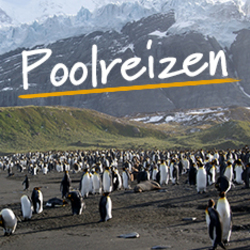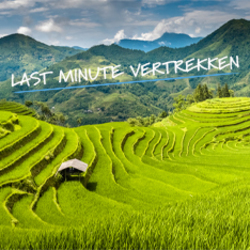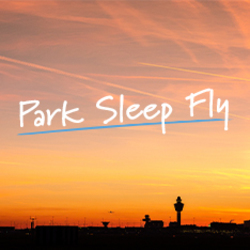Sawadee de nummer 1 in Groepsreizen en Avontuurlijke Reizen
Activities
- Walking & Trekking
- Point-to-Point
- — Trek in Isalo National Park — Climb Peak Boby, the second-highest peak in Madagascar — See lemurs in their natural habitat — Relax on the beach in Ifaty
Food
-
1
Start Antananarivo
Our adventure starts in Antananarivo, known locally as Tana. There is a group meeting and briefing in the evening followed by an optional group dinner for those who wish to join. Accommodation: Hotel Belvedere (or similar)
-
2
Morning city tour; transfer to Ambositra
We take a morning walk to the upper part of Antananarivo, ascending to Antaninarenina (the commercial and administrative part of town) and walking to the main entrance of the Queen’s Palace, with outstanding views over Tana. We drive to Ambositra in the afternoon, where we have the chance to visit Zafimaniry handicraft centres. Max altitude: 4,460ft (1,360m) Accommodation: Artisan Hotel (or similar)
-
3
To Antoetra; full-day trek through hills and rice fields, visiting local villages
A full day walking to Antoetra allows us to discover and explore Zafimaniry villages. The Zafimaniry people are renowned for their woodcarvings; in their villages, even the houses are works of art! In 2003, the Zafimaniry people and their woodwork were considered to be masterpieces of the Oral and Intangible Heritage of Humanity, a list maintained by Unesco to protect and preserve their way of life. We walk through habituated areas – through rice fields, hills and small villages, following regular paths used by locals. After the walk, we drive back to Ambositra. Max altitude: 5,840ft (1,780m) Accommodation: Artisan Hotel (or similar)
-
4
Transfer to Ranomafana National Park
Today we head south and east to the well-visited national park of Ranomafana. The drive takes us through spectacular scenery, past neat Betsileo rice paddies and thick forests. We reach our destination in the afternoon and, after a rest at the hotel, we take an evening walk along the roadside of Ranomafana to spot nocturnal wildlife. Accommodation: Hotel Le Grenat (or similar)
-
5
Morning visit to Ranomafana National Park; transfer to Ambalavao in the afternoon
We visit Ranomafana National Park in the morning, a mountainous rainforest park with elevations ranging from 1,970ft to 4,595ft (600m to 1,400m). It contains many different forest types (from lowland rainforest to cloud forest and high plateau forest) and provides the opportunity to see various lemur species (golden bamboo lemurs, greater and lesser bamboo lemurs, red-bellied lemurs, red-fronted lemurs, Mile Edward’s sifaka) plus birds, frogs, reptiles, snails and orchids. In the afternoon, we drive to Fianarantsoa, the capital city of the Betsileo tribe Ambalavao. Then we head south to Ambalavao, the commercial centre of the southern Betsileo region, renowned for folk art and crafts. We will stop at Domaine de Manohisoa, about 5 km south of Fianarantsoa, to visit a wine farm and taste some local wine. We arrive in Ambalavao before sunset. Here we learn about the production of Antemoro paper: a paper produced from the bark of the havoha tree. Max altitude: 3,280ft (1,000m) Accommodation: Tsienimparihy Lodge (or similar)
-
6
Early transfer to Andringitra National Park to start the three-day trek to climb Peak Boby
We have an early transfer to Andringitra National Park, one of the most beautiful and biodiverse parks in Madagascar. Andringitra has been managed by the WWF since 1993 and has three distinct eco-zones: low-altitude rainforest, montane rainforest and high-altitude vegetation. Although Andringitra contains diverse wildlife (more than 100 bird species, 50 mammal species, including 13 lemurs types, and 55 frog species), the prime reason for visiting is for the stunning landscape, vegetation and superb trekking. More than 1,000 plant species exist in this national park, and the guides are highly knowledgeable on the local plants and their medicinal uses. In the morning, we visit two waterfalls, Riandahy and Raimbavy, and then begin our trek to reach the second-highest peak in Madagascar, Peak Boby (which is also known as Pic d’Imarivolanitra or ‘close to the sky’). The trek begins in forest, which is slowly replaced by alpine meadows covered with orchids by the end of the rainy season. Leaving the forest, we ascend a steep path to the Andohariana plateau, climbing higher behind granite mountaintops. As we walk through the high montane vegetation, we reach a natural pool, which offers a freezing but very refreshing swim. After approximately six hours of walking, we camp at Anderamposty (6,890ft/2,100m). Max altitude: 6,890ft (2,100m) Accommodation: Full-service camping
-
7
Andringitra National Park
On our longest trekking day, we begin our climb to the summit of Peak Boby early to avoid climbing in the full heat of the day. Keep your camera handy as the trek climbs higher, giving unrivalled views and superb high-altitude flora. Although this is the highest accessible peak in Madagascar, it is a technically easy ascent up carved steps. We should reach the summit after about three to four hours. We take the same route back to our campsite, where we have a chance to relax by the river while our lunch is prepared. After lunch, we head out through moon-like landscapes, granite cliffs and a forest of palm trees en route to our campsite. After approximately six hours of walking, we camp at Iantaranomby (5,415ft/1,650m). Max Altitude: 8,720ft (2,658m) Accommodation: Full-service camping
-
8
Andringitra National Park
On our final day of walking in Andringitra National Park, we leave the mountains after breakfast, exploring villages on foot. With the decreasing altitude, we pass many forms of succulent plants, such as the pachypodium (which looks like a mini baobab tree), euphorbia and through savannah landscape. After approximately four hours, we camp at Meva Campsite in Tsaranoro Valley (2,955ft/900m). Max altitude: 5,035ft (1,535m) Accommodation: Full-service camping
-
9
Visit Anya Reserve to look for ring-tailed lemurs; to Isalo National Park
We drive to the little town of Ranohira today, the base for visiting Isalo National Park. Along the way, we visit the small reserve of Anja, where ring-tailed lemurs (otherwise known as kattas) can be observed in their natural habitat. Accommodation: Les Toiles de l’Isalo (or similar)
-
10
Exploring Isalo National Park
We spend two days exploring Isalo National Park – a trip highlight. Isalo is a vast region of wind-polished and water-scoured rock towers, deep canyons, gorges and oases, often described as Eden. We start by walking along a relatively flat path, following the foot of the rocky mountain range, until the magnificent Canyon of Makis, where we search for cheeky ring-tailed lemurs and Verreaux’s sifakas. From here, we have a fairly steep climb (those suffering from vertigo may find this challenging) and then walk through the scenic, moon-like landscape of the park to our campsite. Max altitude: 3,590ft (1,094m) Accommodation: Full-service camping
-
11
Continue exploring Isalo National Park
Today is our second day discovering Isalo National Park. We visit Namaza waterfall, once again in search of ring-tailed lemurs and Verreaux’s sifakas. We then head to the Piscine Naturelle (natural swimming pool), a beautifully lush spot in such an arid landscape, where we can swim and relax after the hot walk. Soak up the sheer beauty of the park – the combination of eroded coloured rock formations, strange plants and enveloping silence make this one of the most captivating places in Africa. Max altitude: 3,940ft (1,200m) Accommodation: Isalo Ranch (or similar)
-
12
To west coast and beaches; overnight at Ifaty Beach
We drive to Tulear after an early breakfast, among the dry forests of the west and the spiny desert of the south, and pass both the Mahafaly and Antandroy tombs, briefly observing their ornate decorations. Antandroy and Mahafaly are reputed to be the most impressive of all Malagasy tombs, with the Antandroy tombs being large and brightly painted, relating to the life story and wishes of the deceased. They are also topped with zebu skulls, which were sacrificed during the funeral festivity – a ceremony of great significance. Mahafaly tombs are characterised by their wooden sculptures known as Aloalo, relating to the life of the deceased and their unfulfilled dreams, as well as their rank within the clan. After a brief stop in Tulear, we continue past the coastal town of Ifaty to our hotel on the beach. Accommodation: Hotel de la Plage (or similar)
-
13
Free time for relaxation or optional activities at Ifaty Beach
We have a free day at Ifaty Beach. Running all the way around the southwest Malagasy coastline, Ifaty Beach lies on one of the largest barrier reefs in the world, which makes it an excellent venue for scuba diving. Between late June and early September, whales can be observed off the beautiful white beaches here and the offshore islet of Nosy Ve is a terrific place for snorkelling. Protected by coral reefs, the beach and waters beyond the hotel offer a welcome rest from your trekking itinerary. Accommodation: Hotel de la Plage (or similar)
-
14
Fly to Antananarivo
Today we transfer to Tulear Airport for our flight to Antananarivo, which arrives in the afternoon. Depending on the flight schedule, you may have free time to explore Antananarivo on your own. Accommodation: Hotel Belvedere (or similar)
-
15
End Antananarivo
Depending on your flight times, you may have the opportunity to embark on an optional short visit to Ambohimanga, the fortified village and royal palace. Ambohimanga, otherwise known as Blue Hills, was forbidden to Europeans for a long time. The kings and queens returned here to rest and relax on the forested slopes of this hilltop village. Here began the line of kings and queens who united Madagascar into one country. Ambohimanga still remains of spiritual significance for the Malagasy people with ceremonies and rituals still taking place.

































